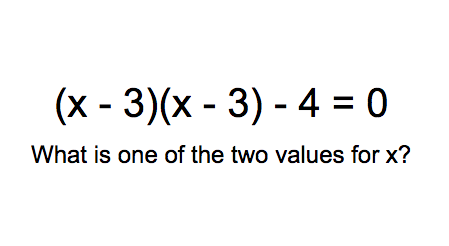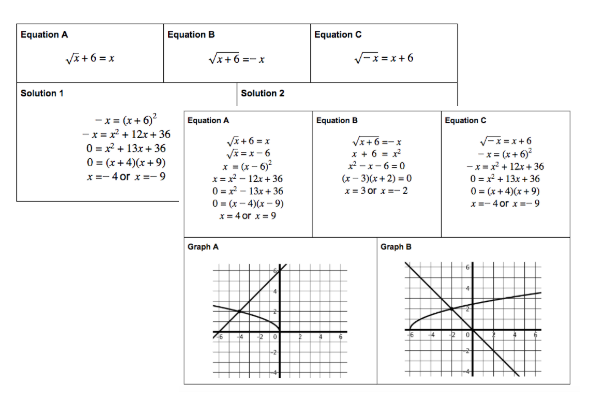Evidence of Understanding
- algebraically determine the rational roots of a factorable polynomial (primarily quadratics)
- notice patterns that make a quadratic equation factorable or un-factorable
- describe the relationship between a quadratic equation’s roots and factors
- show a quadratic is factorable when there is no constant remaining and the original form of the equation is evenly divisible by either factor
- identify perfect squares and difference of squares (including even degree polynomials equations)
- recognize when factors correspond to imaginary roots
- recognize when factors correspond to imaginary roots
- notice patterns that make a quadratic equation factorable or un-factorable
- describe irrational, imaginary, or complex roots of a quadratic equation
- explain when a root is imaginary or irrational using a function’s degree and its graph or table
- approximate the value of an irrational root by analyzing a function’s graph or table
- calculate irrational, imaginary, or complex roots from an equation in standard or vertex form
- simplify a radical and use perfect squares to predict its location on a number line
- simplify a radical that involves an imaginary factor
- verify both roots must be imaginary if one root is imaginary (also verify for complex)
- generalize characteristics about the roots of any quadratic equation and use them to solve problems
- explain why perfect square trinomials have one unique root
- justify when completing the square is an ideal strategy for identifying roots
- create visual models for a given quadratic equation
- connect parts of a visual model with terms or quantities in its quadratic equation
- derive the quadratic formula from the process of completing the square
- describe roots of a quadratic equation using the discriminant
- use given roots to describe features of the parabola or create a viable quadratic equation
- add, subtract, or multiply imaginary or complex numbers and explain the process
- determine all the roots using a variety of methods including analysis of a graph or table in addition to completing the square, factoring, or the quadratic formula
Develop conceptual understanding:
imaginary, complex, completing the square, quadratic formula, discriminant
Supporting terms to communicate:
roots, real, rational, irrational, perfect square, factor, vertex form, standard form, factored form, inverse operations







